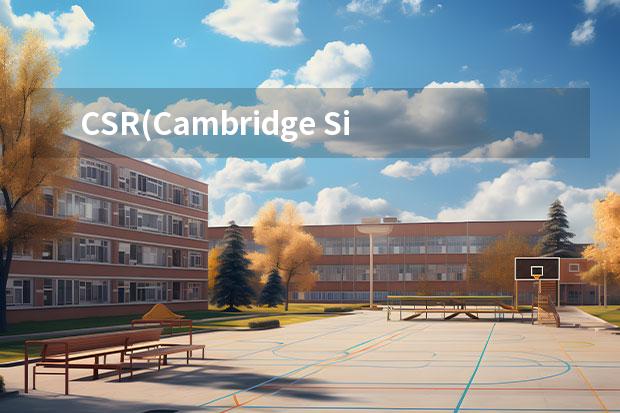2023年4月雅思阅读考试真题答案(4月24日)(2023年4月雅思考试(4月10日)阅读真题答案)很多朋友对这方面很关心,大学路整理了相关文章,供大家参考,一起来看一下吧!
本文目录一览:

2023年4月雅思阅读考试真题答案(4月24日)
您好,我是专注留学考试规划和留学咨询的小钟老师。在追寻留学梦想的路上,选择合适的学校和专业,准备相关考试,都可能让人感到迷茫和困扰。作为一名有经验的留学顾问,我在此为您提供全方位的专业咨询和指导。欢迎随时提问!
如今4月24日的雅思考试已经完成,对于这一次的雅思考试相信也有很多学生想要了解它的真题,好让自己在之后的考试里能够有所准备。那么小钟老师今天就把这次雅思考试的阅读真题带给大家。
2023年4月24日雅思阅读真题与答案:
Passage 1
主题:海牛
参考答案:
1. nitrogen
2. sensitive bristles
3. trails
4. tufts
5. TRUE
6. FALSE
7. NOT GIVEN
8. FALSE
9. NOT GIVEN
10. dolphin
11. seagrass shortage
12. 1750
13. fishing net
Passage 2
主题:Are artists liars
参考答案:
14. vi
15. ii
16. iv
17. viii
18. i
19. v
20-21. BE
22-23. AE
24. (national) newspaper
25. arms dealers
26. victory
Passage 3
文章题材:议论文(科学)
文章题目:美国手语
文章难度:★★★★
题型及数量:段落信息配对+判断
题目及答案:待补充
可参考真题:剑桥15——TEST4 Passage2 Silbo Gomero - the Whistle 'Language' of the Canary Islands
雅思阅读高分技巧:
雅思阅读高分技巧1.identify the writer’s overall purpose, target audience, sources etc. 辨识作者的写作目的,目标读者,和文章来源
这种阅读技能需要学生从文章的结构,内容,用词通篇考虑。往往对应的是文章最后的一道选择题。一般说来,雅思阅读文章的写作目的一般是介绍某个社会现象,目标读者一般都是普通的具有一定认知能力的非专业性读者,文章都来自一些偏学术化的杂志和书籍。但具体的写作目的目标读者和文章来源要具体分析了。那么同学们平时读一些文章的时候就下意识地问问自己作者为什么写这篇文章,作者希望什么样的人来读这样的文章等等这样的问题,其实问这些问题既是读懂一篇文章的手段也是目的。如果读完了一篇文章还不能回答这样的问题证明可能有些地方确实没读懂。
雅思阅读高分技巧2.identify and follow key arguments in a text 识别并读懂文章中的主要论述观点
这种阅读技能是指从整体去把握一篇文章的结构,并对相应的重要的文章观点进行提炼理解的能力。雅思的阅读文章比较学术性,所以相对与其他的文体而言结构其实是比较容易把握的。但还是需要经过真题文章的仔细分析体会去学习英文议论说明性文字的结构特点,尤其注意体会区别出作者自己的观点和别人的观点,以及先负后正的写法。
雅思阅读高分技巧3.identify opinions and attitudes as opposed to facts 区分事实与观点态度
能够区分文章中的内容是观点态度或者是事实是一个阅读者应该具备的基本技能。如果阅读的时候不分青红皂白都认为是事实,我们就缺失了对文章信息的判断能力,阅读将可能是极其混乱的。人们不只在阅读外语文章的时候会犯这种错误。那么在文章中如果出现一些类似表示观点态度的词(比如 maintain, argue)要注意,这些词后面出现的应该就是观点和态度。观点和态度是主观的,不能被证明的。但如果是这样的表达:evidence show, experiment suggest后面跟的就应该是事实,可以被证明的。
雅思阅读高分技巧4.locate specific information 定位细节信息
雅思阅读有一种比较难的题型which paragraph contains the following information考察的就是定位细节信息的能力。这种能力是考察学生能不能在海量的信息里找到你最想找的信息然后进行阅读的能力。这反应了国外大学阅读量巨大的要求。学生不可能每个字都读,得具备这种找到最有价值的一点然后再进行相关阅读的能力。平时训练这种scanning的阅读技能。当然如果对全文结构不做一个skimming也就是大致了解文章结构而大致知道在哪几段中寻找,这种任务基本上是不可能完成的。这也反应了读书的一个基本步骤,拿到一本书我们应该先看目录,知道书的大致结构再由此在最相关的段落中寻找阅读兴趣点。因此这种题型需要skimming+scanning两种阅读技能的结合才能准确快速地解题。
雅思阅读高分技巧5.read for detailed information 细致阅读
雅思阅读高分技巧6.extract relevant information 摘取相关信息
当定位到最相关的句子之后,雅思阅读考试是希望学生能细致阅读并摘取出相关的信息答案的。而不是象那种什么不阅读阅读法说的那样不需要读原文就能解出答案。那么平时大家也应该进行相应的精读训练,把一些平时难以读懂的句子仔细通过各种方法真正读懂其意思。当然阅读的时候应该带着问题去有针对性的阅读,搜寻我们想通过阅读得出的最相关的信息。这些阅读技能对应的是雅思绝大部分的细节题:包括填空题,表格题,句子完成题。
雅思阅读高分技巧7.distinguish the main idea from supporting detail 区分主旨和细节
希望以上的答复能对您的留学申请有所帮助。如果您有任何更详细的问题或需要进一步的协助,我强烈推荐您访问我们的留学官方网站
,在那里您可以找到更多专业的留学考试规划和留学资料以及*的咨询服务。祝您留学申请顺利!
2023年4月雅思考试(4月10日)阅读真题答案
您好,我是专注留学考试规划和留学咨询的小钟老师。在追寻留学梦想的路上,选择合适的学校和专业,准备相关考试,都可能让人感到迷茫和困扰。作为一名有经验的留学顾问,我在此为您提供全方位的专业咨询和指导。欢迎随时提问!
想要去出国留学,就必须要去完成雅思考试,并且要在该考试里拿到不错的分数。如果大家在考试前有看过以往考试的真题以及答案解析,对于自己的考试是有很多用处的。那么今天就到小钟老师来看一看雅思考试2023年4月10日雅思阅读部分的考试真题答案。
2023年4月10日雅思阅读真题及答案:
Passage 1
主题:自助超市
题型:填空+ 匹配+选择
Passage 2
主题: 水母泛滥的原因及影响
题型:匹配+填空+多选
Passage 3
主题:人类的进化
题型:判断+单选+填空
为何雅思考试阅读总是做不完:
基础薄弱导致读太慢:
很多童鞋的基础不够好,主要体现在词汇量不够及语法掌握不牢,这就会导致题目文章理解困难,分不清复杂句结构,导致抓不住重点。
针对这两点你需要做的是:
1、牢固掌握雅思阅读高频词
2、对文章进行生词和同义替换的总结
同意替换词是雅思阅读最大的出题点,自己进行总结,能帮助自己更深入的理解。
3、掌握雅思阅读重点句型
雅思阅读重在转折、并列、因果等逻辑上的考察,补好基础语法后,需要在这些逻辑句型上花费更多的时间去掌握。
长时间紧扣单个句子:
很多同学会对每个单词逐一停顿,并逐一翻译地阅读,强迫症式地想完全理解每句话的意思,这样会浪费很多时间,也完全没有必要。
在雅思阅读中,要以意群、句子,甚至几个句子为一个单位移动,必要的时候进行跳读。
掌握基础语法和逻辑后,读不懂的快读,读得懂的抓住重点。
还有同学低声朗读或嘴唇蠕动着默读,用手或笔指着卷面一排排地导读,这些都是严重影响阅读速度的坏习惯,现在开始,童鞋们就应有意识的抑制这些习惯性行为。
时间快用完时紧张负面情绪:
在考场上,很多同学越想按时完成越是紧张。一旦一篇文章没有及时做完,后面就慢慢心态崩了...
其实,大家的目标不是9分的话,就不是 非得做完全部的题目,最重要的是,保证已做的题全部正确。
所以在平常的练习中,先保证正确率,前期可以仔细地慢慢做,做到每题全对;
后期熟练做题并牢固掌握词汇语法后,要在1小时内达到40个全对的目标,第一遍对错误的题进行总结,第二遍继续练习直到1小时内全对为止。
最后,不能单纯追求词汇量的提高,真正掌握一个单词在语境中的意思,比自我感动式的狂刷单词有用得多。
雅思考试阅读有哪些考试顺序:
1、何为“顺序原则”
“顺序原则”即雅思官方在题型特点注释中所述的“Answers are in passage order.”说的复杂一些,便是:若某一题型符合“Answers are in passage order”的描述,该题型所包含的几个题目的答案在文中分布的相应位置随题号的变大而逐渐靠后。Sounds like a mouthful, right? 简而言之吧,就是这种题型考生可以顺着题号一题一题地往文章更靠后的位置找,比较符合正常人的阅读习惯(相信很少有人上来先读一篇文章的第三段,或者第四段吧)。
2、顺序原则与题型
宏观地看一篇雅思阅读文章包涵的全部题型,答案分布的顺序也符合题型出现的先后顺序,例如全文包含先判断题,后填空题这两种题型,则较有可能出现的情况是判断题答案分布在文章的前半部分,而填空题在文章后半部分。例如: 剑桥雅思真题集系列7,Test 4 Passage 1: 前7题判断题分布于前6个段落,剩下的段落填空题分布于第9段,和前面7段无关。
3、顺序原则之于解题的指导方针
最后来说说顺序原则和解题过程的关系。两者的关系主要体现在前者对如何读题干的影响。对于遵守顺序题型的题型,考生在审阅题干时候可以选择审一题解一题的做法,因为相关内容在文中按顺序出现,这样做考生也会感到循序渐进,脉络清楚。当然,选择在一开始讲该题型的每个题干都审阅一遍也未尝不可,可先完成较容易定位的题目,再活用顺序原则,缩小较难定位题目所需的搜索范围。对于乱序题型,特别是段落信息配对题,考生须在文中搜索答案之前审阅全部题干,最好读两遍以加深印象:因为信息在文中的分布为乱序,所以第1题的信息有可能出现在比如,倒数第二段,而我们的阅读顺序,如前文所述,肯定是从头段至尾段的。若读一题做一题便可能会出现做一题就耗去读全篇的时间,得不偿失。题号大的题目在这一题型中是很有可能比题号小的题目更早做出来的。
希望以上的答复能对您的留学申请有所帮助。如果您有任何更详细的问题或需要进一步的协助,我强烈推荐您访问我们的留学官方网站
,在那里您可以找到更多专业的留学考试规划和留学资料以及*的咨询服务。祝您留学申请顺利!
2023年6月30日雅思阅读真题整理
您好,我是专注留学考试规划和留学咨询的小钟老师。在追寻留学梦想的路上,选择合适的学校和专业,准备相关考试,都可能让人感到迷茫和困扰。作为一名有经验的留学顾问,我在此为您提供全方位的专业咨询和指导。欢迎随时提问!
对于2023年6月30日的雅思考试,不知道同学们对于此次考试有哪些把握呢?接下来就和小钟老师来看看2023年6月30日雅思阅读真题整理。
权威点评
文章题材常规,涉及到环境,动物,商业类。据烤鸭们反馈,passage 3生词较多,导致原文和题干理解困难,影响做题。这要求考生在平时练习中多总结不同场景的高频词汇,并且提高在语境中理解生词的能力。从题型看,难度适中,基础题型:填空题(包括summary)和判断题占30个左右,考查对于细节信息的定位和理解;匹配题考查了6个段落信息匹配题,考查学生在短时间内准确找到匹配段落信息的能力,考生必须掌握高效做匹配题的方法,在有限的时间内拿到更多的分数。
Passage 1
题目Why good ideas fail?
话题分类商业类
题型及对应数量判断题 5
填空题 8
内容回忆一位市场营销专业的学生做了关于公司治理的案例,该公司早前获得了成功,后来失败了。两位专家对该公司的营销进行分析与评价,并且提出了一些市场营销的策略
题目回忆判断题
1 TRUE
2 TRUE
3 NOT GIVEN
4 NOT GIVEN
5 FALSE
填空题
6 surface
7 name
8 需要补充
9 weight loss
10 behavior
11 focus group
12 simple survey
13 instincts
参考阅读 10-3-1 商业类
Passage 2
题目Hold back floods
话题分类环境类
题型及数量段落信息匹配 6
单选题 2
填空题 5
内容回忆本文讲述了主要讲了洪水以前和现在的情况对比,以及治理洪水的新方法
Hold back flood
A Last winter’s floods on the rivers of central Europe were among the worst since the Middle Ages, and as winter storms return, the spectre of floods is returning too. Just weeks ago, the river Rhône in south-east France burst its banks, driving 15,000 people from their homes, and worse could be on the way. Traditionally, river engineers have gone for Plan A: get rid of the water fast, draining it off the land and down to the sea in tall-sided rivers re-engineered as high-performance drains. But however big they dug city drains, however wide and straight they made the rivers, and however high they build the banks, the floods kept coming back to taunt them, from the Mississippi to the Danube. And when the floods came, they seemed to be worse than ever. No wonder engineers are turning to Plan B: sap the water’s destructive strength by dispersing it into fields, forgotten lakes, flood plains and aquifers.
B Back in the days when rivers took a more tortuous path to the sea, flood waters lost impetus and volume while meandering across flood plains and idling through wetlands and inland deltas. But today the water tends to have an unimpeded journey to the sea. And this means that when it rains in the uplands, the water comes down all at once. Worse, whenever we close off more flood plains, the river’s flow farther downstream becomes more violent and uncontrollable. Dykes are only as good as their weakest link—and the water will unerringly find it. By trying to turn the complex hydrology of rivers into the simple mechanics of a water pipe, engineers have often created danger where they promised safety, and intensified the floods they meant to end. Take the Rhine, Europe’s most engineered river. For two centuries, German engineers have erased its backwaters and cut it off from its flood plain.
C Today, the river has lost 7 percent of its original length and runs up to a third faster. When it rains hard in the Alps, the peak flows from several tributaries coincide in the main river, where once they arrived separately. And with four-fifths of the lower Rhine’s flood plain barricaded off, the waters rise ever higher. The result is more frequent flooding that does ever-greater damage to the homes, offices and roads that sit on the flood plain. Much the same has happened in the US on the mighty Mississippi, which drains the world’s second largest river catchment into the Gulf of Mexico.
D The European Union is trying to improve rain forecasts and more accurately model how intense rains swell rivers. That may help cities prepare, but it won’t stop the floods. To do that, say hydrologists, you need a new approach to engineering not just rivers, but the whole landscape. The UK’s Environment Agency—which has been granted an extra £150 million a year to spend in the wake of floods in 2000 that cost the country £1billion—puts it like this: “The focus is now on working with the forces of nature. Towering concrete walls are out, and new wetlands are in.” to help keep London’s feet dry, the agency is breaking the Thames’s banks upstream and reflooding 10 square kilometres of ancient flood plain at Otmoor outside Oxford. Nearer to London it has spent £100 million creating new wetlands and a relief channel across 16 kilometres of flood plain to protect the town of Maidenhead, as well as the ancient playing fields of Eton college. And near the south coast, the agency is digging out channels to reconnect old meanders on the river Cuckmere in East Sussex that were cut off by flood banks 150 years ago.
E The same is taking place on a much grander scale in Austria, in one of Europe’s largest river restorations to date. Engineers are regenerating flood plains along 60 kilometres of the river Drava as it exits the Alps. They are also widening the river bed and channeling it back into abandoned meanders, oxbow lakes and backwaters overhung with willows. The engineers calculate that the restored flood plain can now store up to 10 million cubic metres of flood waters and slow storm surges coming out of the Alps by more than an hour, protecting towns as far downstream as Slovenia and Croatia.
F "Rivers have to be allowed to take more space. They have to be turned from flood-chutes into flood-foilers", says Nienhuis. And the Dutch. for whom preventing floods is a matter of survival. Have gone furthest. A nation built largely on drained marshes and seabed had the fright of its life in 1993 when the Rhine almost overwhelmed it. The same happened again in 1995. when a quarter of a million people were evacuated from the Netherlands. But a new breed of "soil engineers" wants our cities to become porous, and Berlin is their shining example. Since reunification, the city's massive redevelopment has been governed by tough new rules to prevent its drains becoming overloaded after heavy rains. Harald Kraft, an architect working in the city. says: "We now see rainwater as a resource to be kept rather than got rid of at great cost." A good illustration is the giant Potsdamer Platz, a huge new commercial redevelopment by Daimler Chrysler in the heart of the city.
G Los Angeles has spent billions of dollars digging huge drains and concreting river beds to carry away the water from occasional intense storms. The latest plan is to spend a cool 280millionraisingtheconcretewallsontheLosAngelesriverbyanother2metres.Yetmanycommunitiesstillfloodregularly.MeanwhilethisdesertcityisshippinginwaterfromhundredsofkilometresawayinnorthernCaliforniaandfromtheColoradoriverinArizonatofillitstapsandswimmingpools,andirrigateitsgreenspaces.Itallsoundslikebadplanning."InLAwereceivehalfthewaterweneedinrainfall,andwethrowitaway.Thenwespendhundredsofmillionstoimportwater,"saysAndyLipkis,anLAenvironmentalist,alongwithcitizengroupslikeFriendsoftheLosAngelesRiverandUnpavedLA.wanttobeattheurbanfloodhazardandfillthetapsbyholdingontothecity′sfloodwater.Andit′snotjustapipedream.Theauthoritiesthisyearlauncheda280millionraisingtheconcretewallsontheLosAngelesriverbyanother2metres.Yetmanycommunitiesstillfloodregularly.MeanwhilethisdesertcityisshippinginwaterfromhundredsofkilometresawayinnorthernCaliforniaandfromtheColoradoriverinArizonatofillitstapsandswimmingpools,andirrigateitsgreenspaces.Itallsoundslikebadplanning."InLAwereceivehalfthewaterweneedinrainfall,andwethrowitaway.Thenwespendhundredsofmillionstoimportwater,"saysAndyLipkis,anLAenvironmentalist,alongwithcitizengroupslikeFriendsoftheLosAngelesRiverandUnpavedLA.wanttobeattheurbanfloodhazardandfillthetapsbyholdingontothecity′sfloodwater.Andit′snotjustapipedream.Theauthoritiesthisyearlauncheda100 million scheme to road-test the porous city in one flood-hit community in Sun Valley. The plan is to catch the rain that falls on thousands of driveways, parking lots and rooftops in the valley. Trees will soak up water from parking lots. Homes and public buildings will capture roof water to irrigate gardens and parks. And road drains will empty into old gravel pits and other leaky places that should recharge the city's underground water reserves. Result: less flooding and more water for the city. Plan B says every city should be porous, every river should have room to flood naturally and every coastline should be left to build its own defenses. It sounds expensive and utopian, until you realize how much we spend trying to drain cities and protect our watery margins—and how bad we are at it.
题目回忆段落信息匹配题
1. A new approach conducted in the UK D
2. Reasons why twisty path and dykes failed B
3. One project on a river benefits three countries E
4. Illustration of an alternative plan in LA which seems unrealistic G
5. Efforts made in Netherlands and Germany F
6. Traditional ways of controlling flood A
选择题
7. A It may stop the flood involving the whole area
8. D reserve water to protect downstream towns
填空题
9. Berlin set a good example for others.
10. The Rhine and the Mississippi river had the similar problem of water control.
11. An area near Oxford was flooded to protect the city of London.
12. Such planners who want our cities to become porous are called soil engineers.
13. In Los Angeles, *all scale water project could become a larger one.
参考阅读532(环境类)
Passage 3
题目Australian Megafauna
话题分类生物类
题型及数量判断题 4
summary 5
选择题 5
内容回忆对澳大利亚大型动物megafauna的研究,分析人类在几千年前人是否与大型动物共存。有研究者质疑证据不足
题目回忆判断题
27 YES
28 NOT GIVEN
29 NO
30 YES
SUMMARY 题
31 B
32 H
33 D
34 C
35 G
选择题
36 A
37 B
38 A
39 C
40 D
希望以上的答复能对您的留学申请有所帮助。如果您有任何更详细的问题或需要进一步的协助,我强烈推荐您访问我们的留学官方网站
,在那里您可以找到更多专业的留学考试规划和留学资料以及*的咨询服务。祝您留学申请顺利!
以上就是大学路为大家带来的2023年4月雅思阅读考试真题答案(4月24日)(2023年4月雅思考试(4月10日)阅读真题答案),希望能帮助到大家!

 2023年剑桥雅思阅读真题解析:Thomas Young(雅思考试需要的复习资料)
2023年剑桥雅思阅读真题解析:Thomas Young(雅思考试需要的复习资料)
 2023年4月雅思考试(4月10日)阅读真题答案 剑桥雅思阅读AUSTRALIA’SSPORTINGSUCCESS及答案解析 4月雅思阅读考试真题答案
2023年4月雅思考试(4月10日)阅读真题答案 剑桥雅思阅读AUSTRALIA’SSPORTINGSUCCESS及答案解析 4月雅思阅读考试真题答案
 请问2023年剑桥雅思阅读真题解析:Thomas Young(剑7阅读难点剖析)
请问2023年剑桥雅思阅读真题解析:Thomas Young(剑7阅读难点剖析)
 2023年6月19日雅思阅读考试真题答案(请问2023年5月20日雅思阅读考试真题及答案解析)
2023年6月19日雅思阅读考试真题答案(请问2023年5月20日雅思阅读考试真题及答案解析)
 2023年7月14日雅思阅读真题答案及解析(雅思阅读段落细节题特点解析)
2023年7月14日雅思阅读真题答案及解析(雅思阅读段落细节题特点解析)
 2023年11月20日雅思阅读考试真题及答案 剑桥雅思3test3阅读答案 剑桥雅思阅读6 test3答案?
2023年11月20日雅思阅读考试真题及答案 剑桥雅思3test3阅读答案 剑桥雅思阅读6 test3答案?
 CSR(Cambridge Silicon Radio)校园招聘启示 请问2023年10月26日雅思阅读考试真题及答案 csr植物生活史划分中将植物生镜划分为哪几种类型?
CSR(Cambridge Silicon Radio)校园招聘启示 请问2023年10月26日雅思阅读考试真题及答案 csr植物生活史划分中将植物生镜划分为哪几种类型?
 雅思阅读要不要先通读原文 2023年剑桥雅思阅读真题解析:Thomas Young 2023年7月10日雅思阅读部分考试答案
雅思阅读要不要先通读原文 2023年剑桥雅思阅读真题解析:Thomas Young 2023年7月10日雅思阅读部分考试答案
 2023年剑桥雅思阅读真题解析:Thomas Young(剑桥雅思阅读)
2023年剑桥雅思阅读真题解析:Thomas Young(剑桥雅思阅读)
 请问2023年6月17日雅思阅读真题与答案(剑桥雅思阅读6 test3答案?)
请问2023年6月17日雅思阅读真题与答案(剑桥雅思阅读6 test3答案?)









